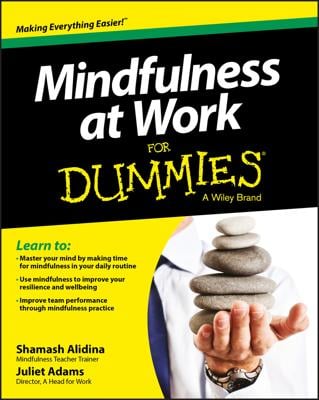Imagine skiing downhill at high speed. You sense the wind whooshing past you, feel the cool mountain breeze, and enjoy the deep blue of the sky. You’re in the zone; in the moment, at one with all around you. When you’re in the zone, you let go of doing mode and come into being mode – the present moment.
This “in the zone” state of mind is called “flow” by psychologist Mikhail Csíkszentmihályi. But what’s flow got to do with the being mode of mind? Surely being in the zone is always about doing? Not quite. Practicing mindfulness helps to generate flow experiences directly.
Here’s what you experience when you’re in a state of flow:
-
You feel at one with the world.
-
You let go of your sense of an individual and any worries and problems.
-
You’re completely focused.
-
You feel very satisfied with what you’re doing.
-
You’re happy, although you don’t really notice it at the time because you’re so engrossed in whatever you’re doing.
Mindfulness and the factors of flow
Csíkszentmihályi found some key factors that accompany an experience of flow. As long as you do a task mindfully, it’s potentially going to be a flow experience.Here are some of key factors of flow and how you can generate them using mindfulness:
-
Attention. Flow experiences need attention. Mindfulness is all about attention, and mindfulness increases your level of attention with practice. Through regular mindfulness practice, your brain becomes better at paying attention to whatever you choose to focus on, making a flow experience far more likely. When driving, you simply pay attention to your surroundings rather than letting your mind wander off.
-
Direct and immediate feedback. Flow needs direct feedback as to how you’re doing. When you’re practicing mindfulness, you’re getting immediate feedback because you know at any time if you’re paying attention or if your mind has wandered off. So, if driving, you notice when your mind has drifted into dreaming about what’s for dinner tonight, and you bring your attention gently back to the here and now.
-
Sufficiently challenging task. Mindfulness is an active process of repeatedly rebalancing to come back to the present moment while the mind — doing what minds do — wants to pull you away into other thoughts. To drive in a mindful way from work to home would be a suitable challenge for anyone, potentially creating a flow experience.
-
Sense of personal control. When you’re mindful of your thoughts and feelings, you create a choice. You don’t have to react to them or do what they tell you to do. This generates a sense of control, as you become aware of the choices you have. If whilst driving, someone cuts in front of you, you’ve got the choice to react and feel annoyed, or practice letting it go.
-
Intrinsically rewarding. You perform a task for the sake of itself. If you’re driving your car to get home as fast as possible to have your cup of tea, you’re not going to be in a flow experience. If you drive to simply enjoy each moment of the journey, that’s different. You can feel the warmth of the sunshine on your arm and appreciate the color of the sky.
Normally, mindfulness would make you a safer driver rather than a more dangerous one. However, begin by being mindful of safer tasks like washing dishes or going for a walk before you attempt mindfulness of driving, just so you get used to being mindful. Don’t use mindfulness of driving if you find the experience distracting.
Discover your mindfulness flow experiences
Everyone’s had flow experiences. By knowing when you’ve been in flow, you can encourage more opportunities to experience it in the future. The following are some typical activities that people often find themselves flowing in. You may even find something here to try yourself:-
Reading or writing. When you’re fully engaged in a good book full of a challenging storyline, you’re in flow. You forget about everything else and time flies by. When writing in flow, words simply pop into your head and onto your page with effortless ease. You stop criticizing what you’re creating, and enjoy seeing the report or book pouring out of you.
-
Art or hobbies. Most artistic endeavors involve flow. You’re directly connected with your senses and people often describe themselves as being “at one with the music.” If you’re doing a particular hobby because you’re forced to, it may or may not be a flow experience as the intrinsic motivation isn’t there.
-
Exercise. Some people love exercise so much that they get addicted to it. The rush of adrenaline, the full focus in the present moment, and the feeling of exhilaration makes for a flow experience.
-
Work. Perhaps surprisingly, you can be in flow at work. Research has found that people are happier at work than they are in their leisure time. Work encourages you to do something with a focused attention, and often involves interaction with others. You need to give something of yourself. This can set the stage for flow. In contrast, watching TV at home can drain your energy.
-
Anything done mindfully. Remember, anything that you do with a mindful awareness is going to generate a flow state of mind, from making love to making a cup of tea.

